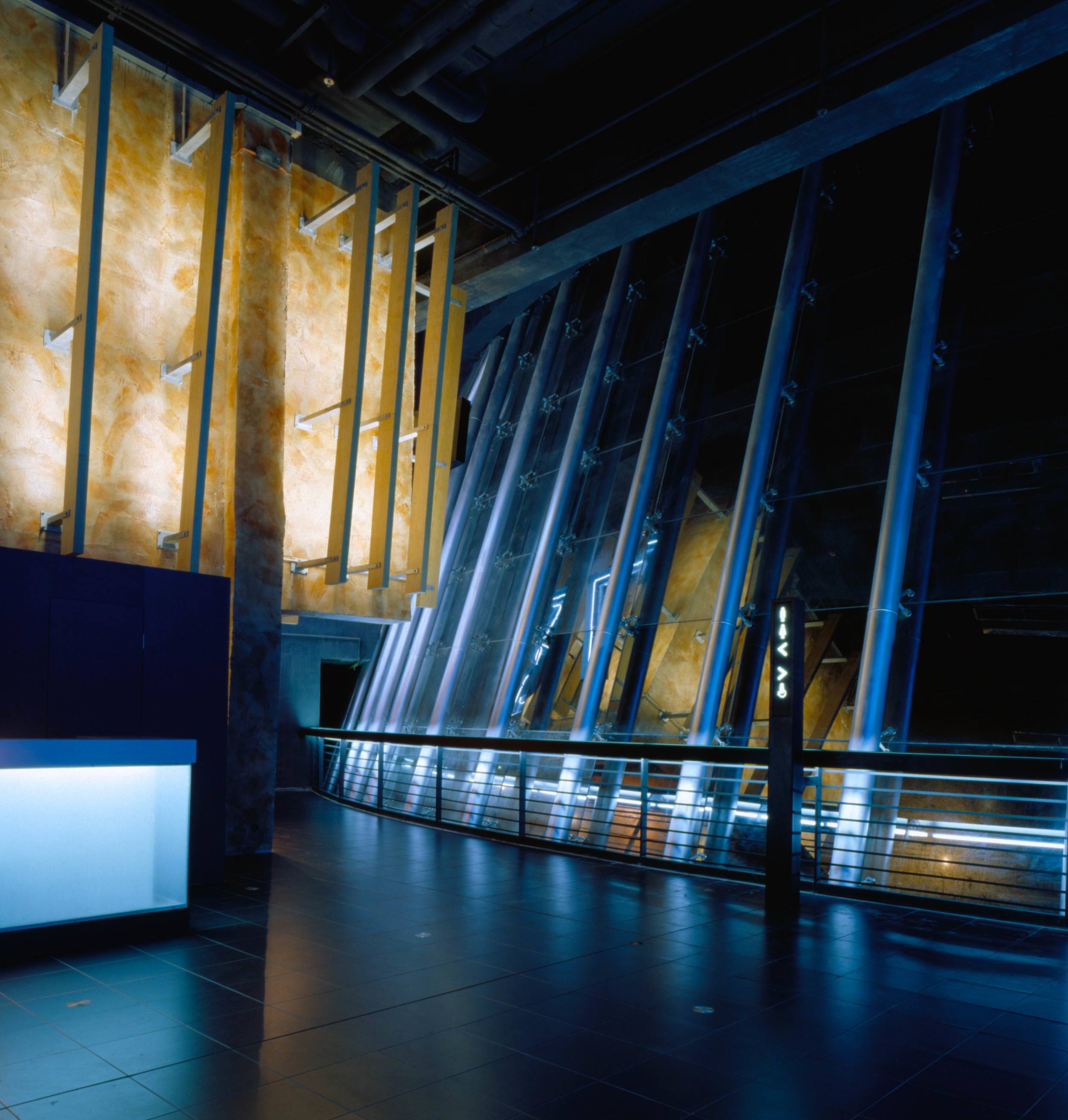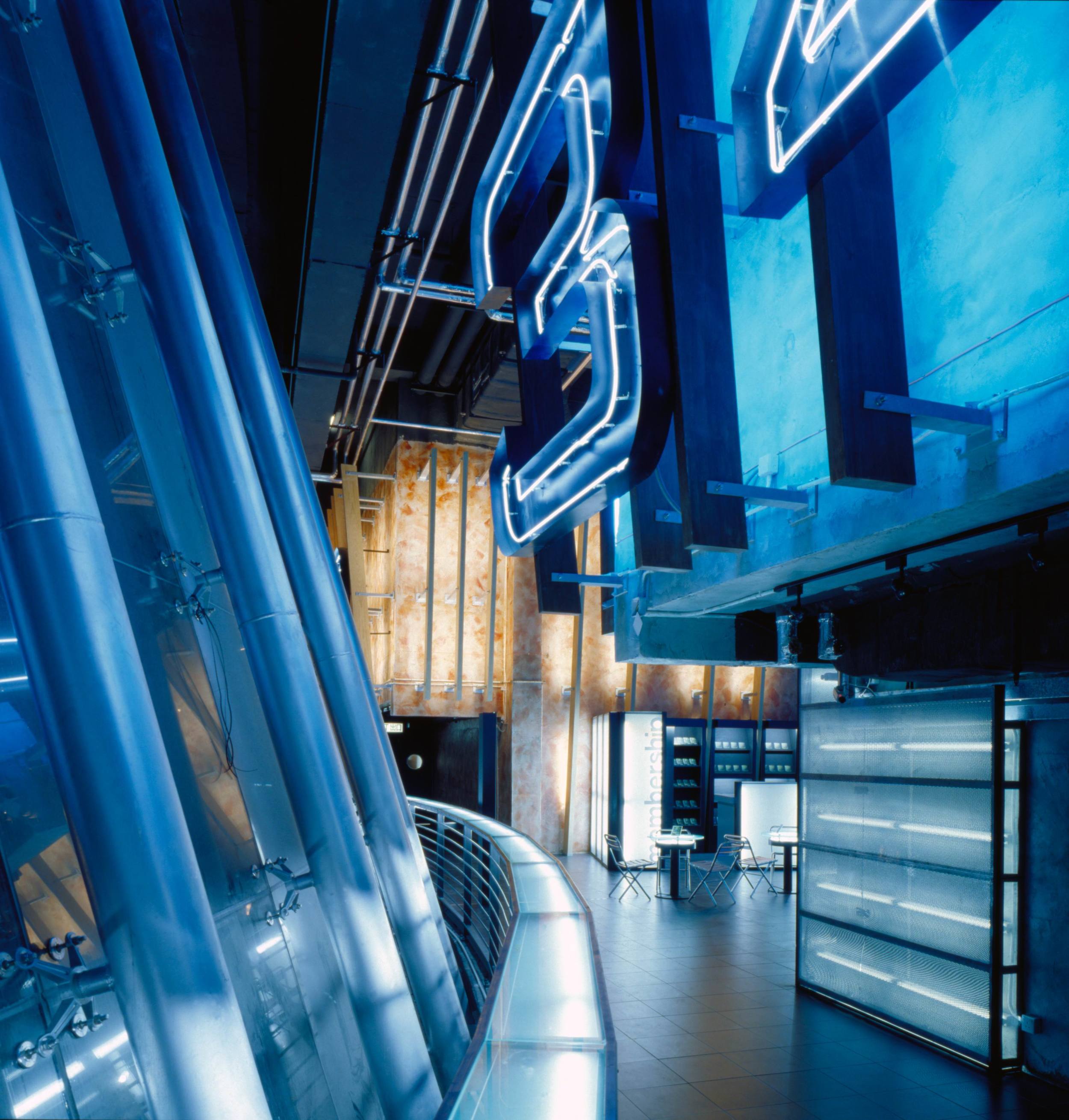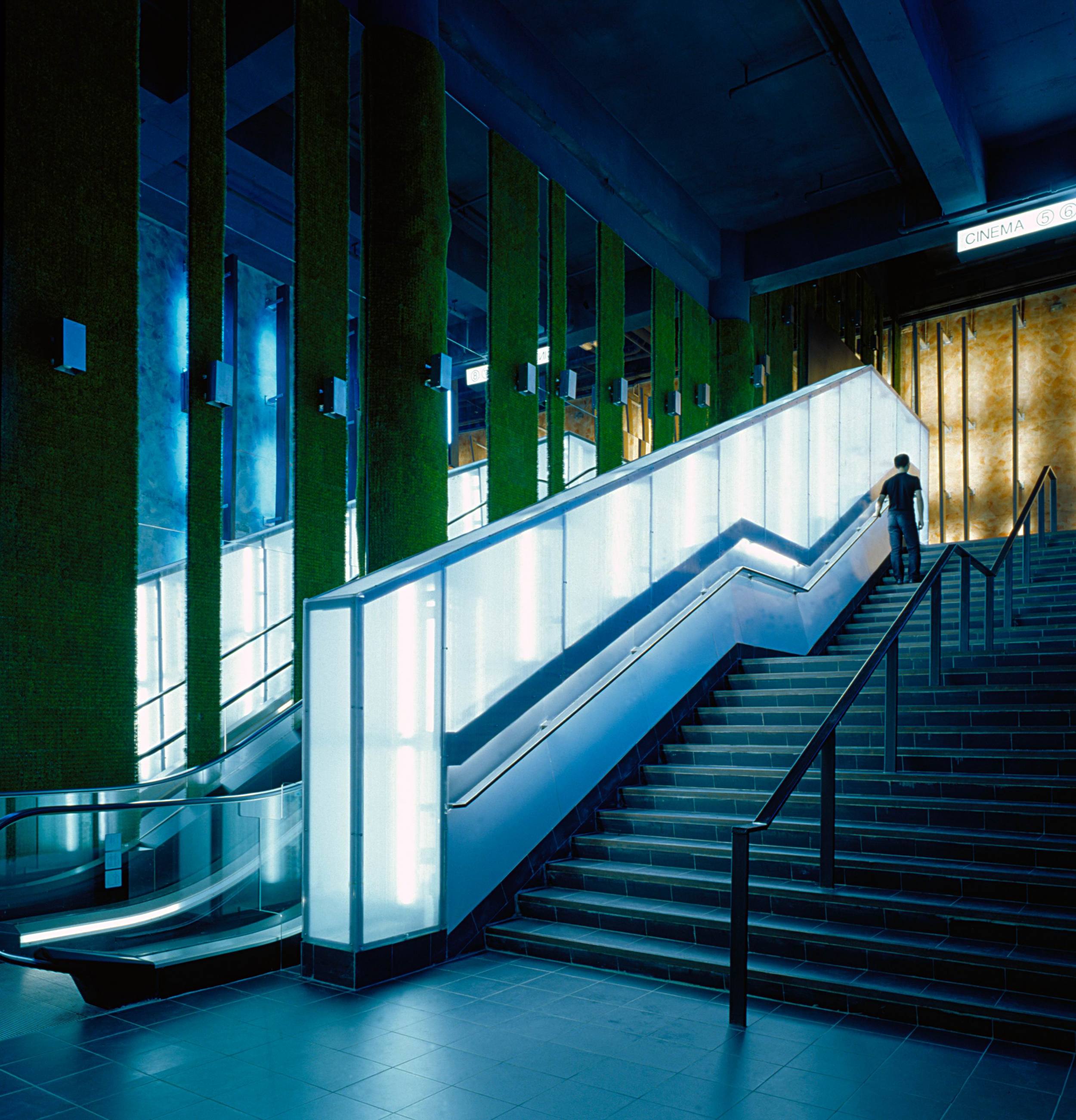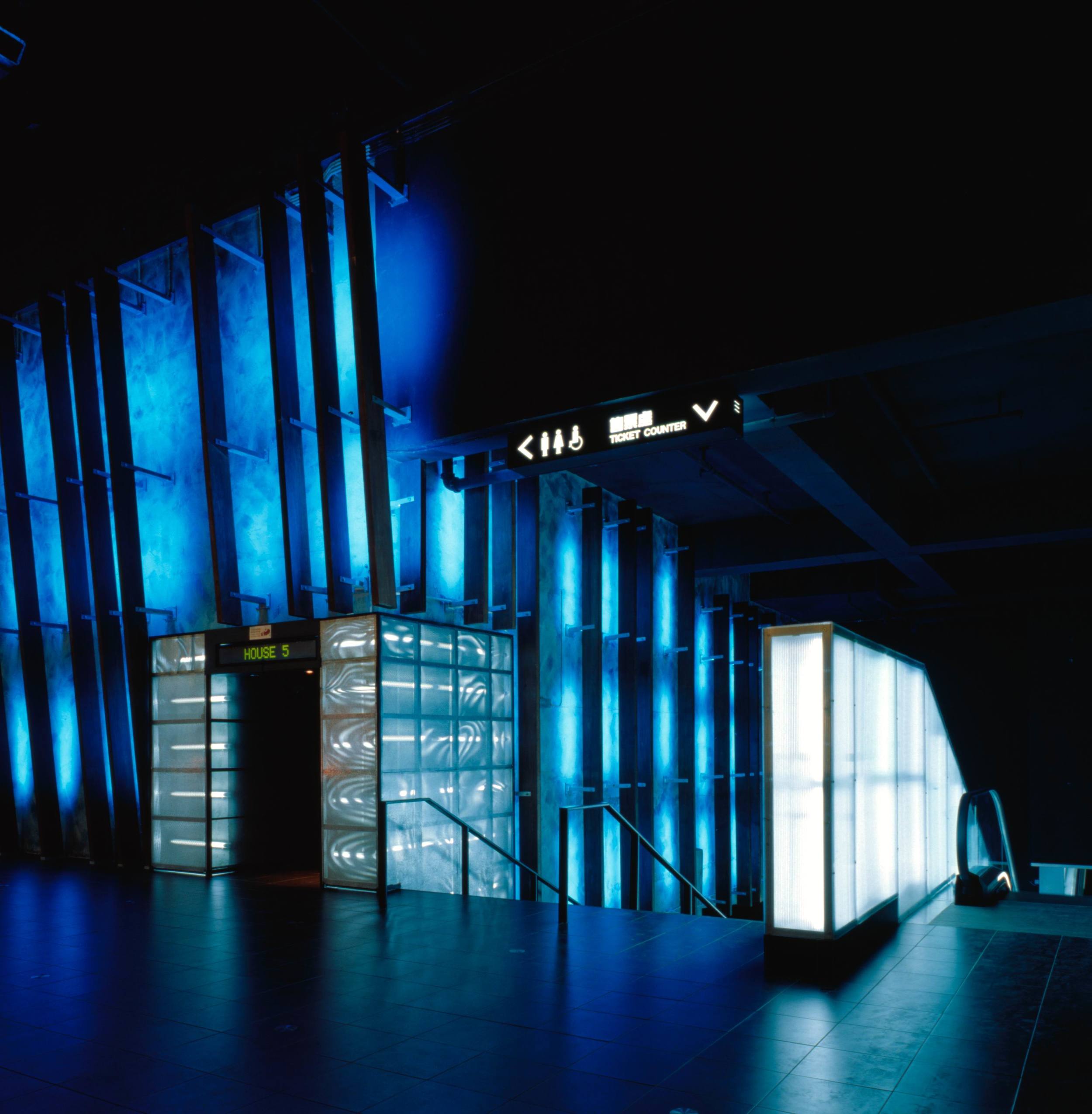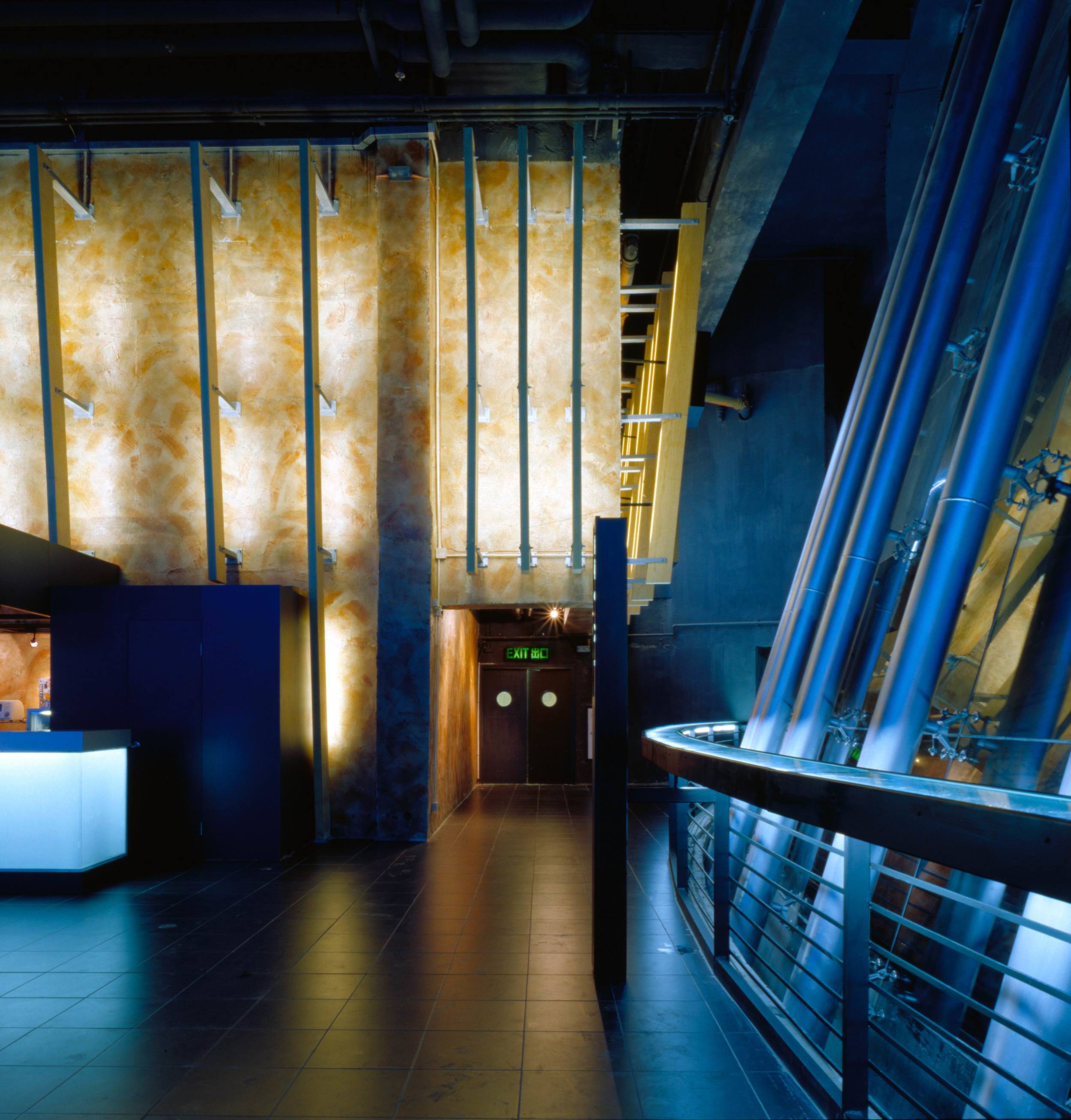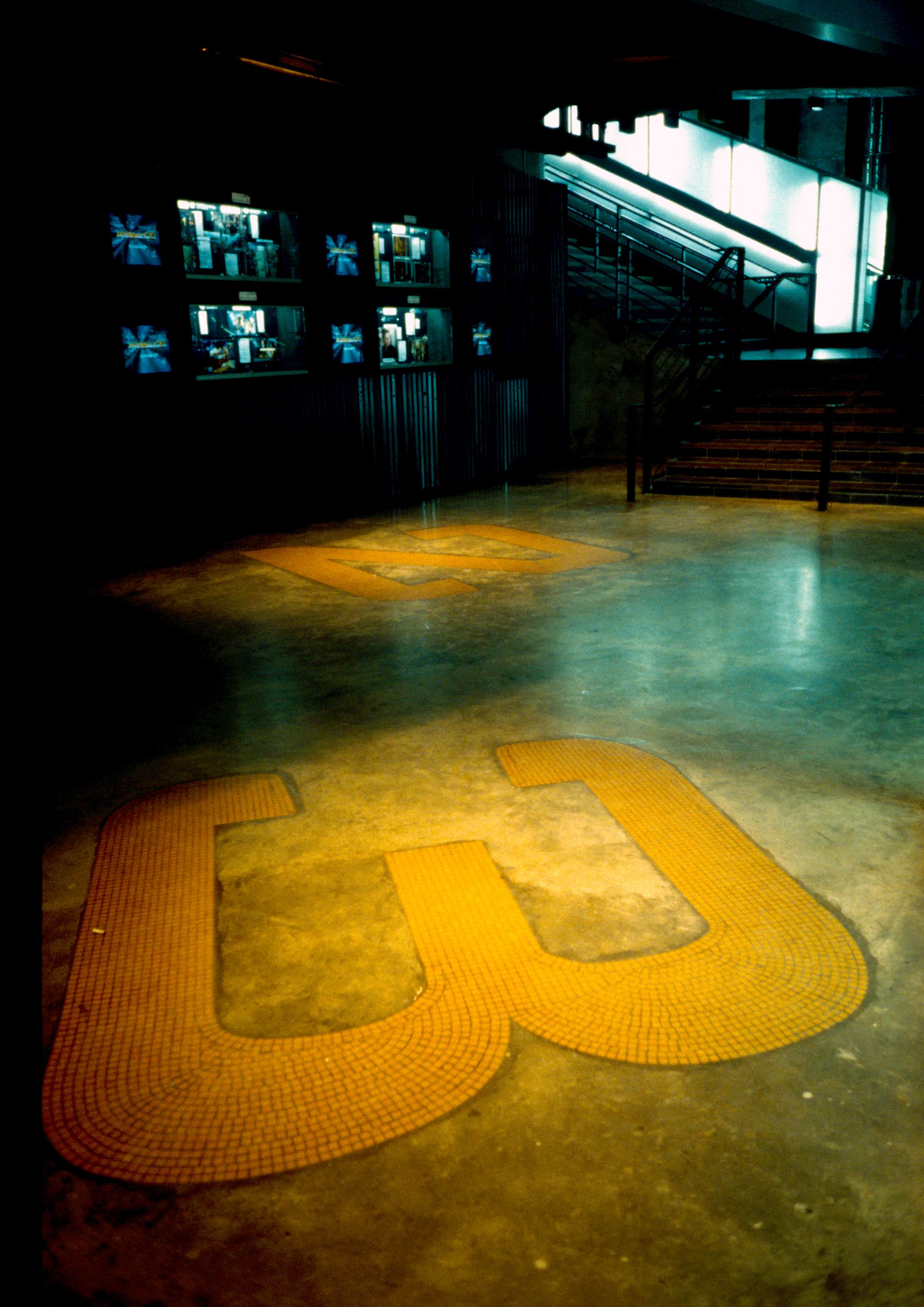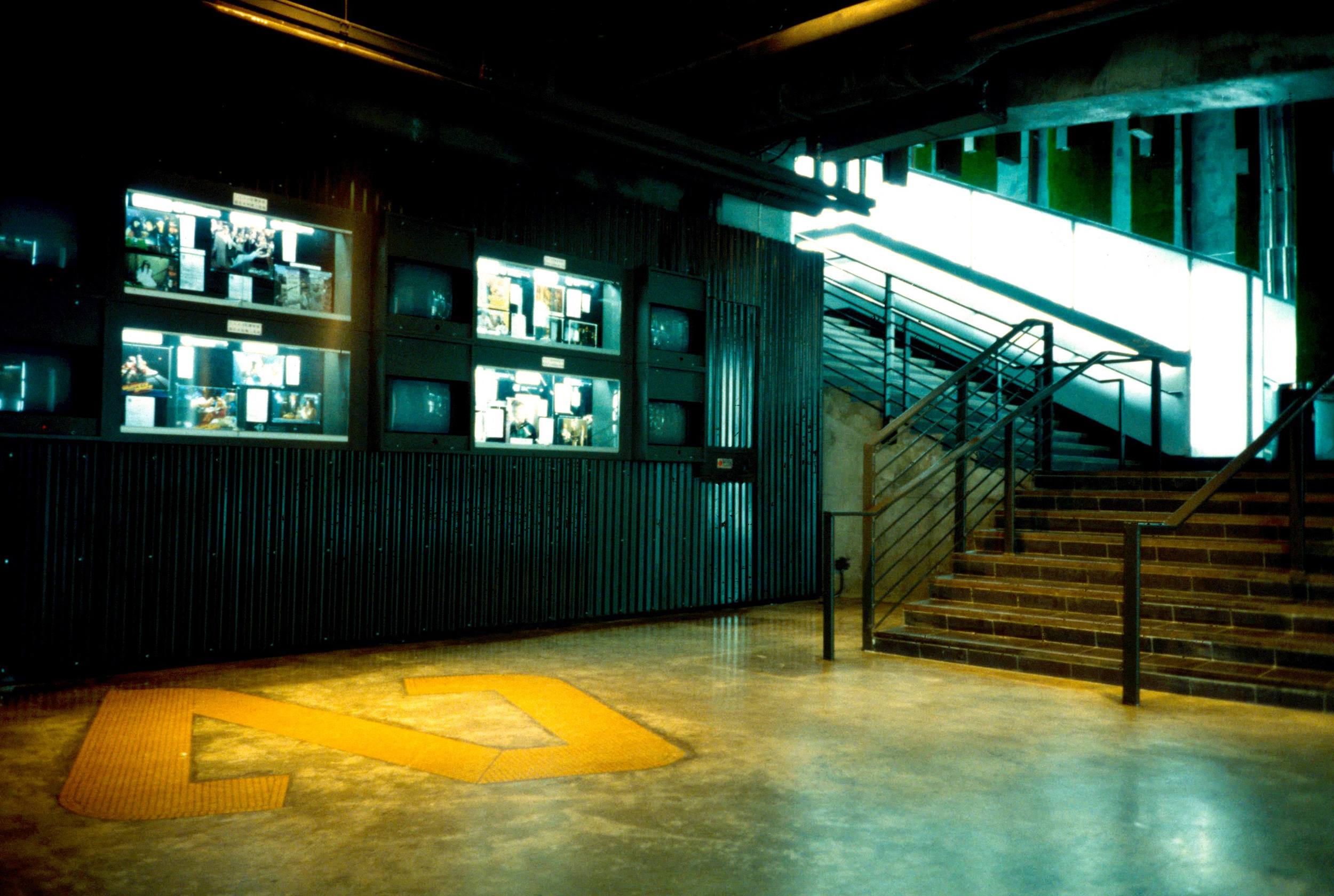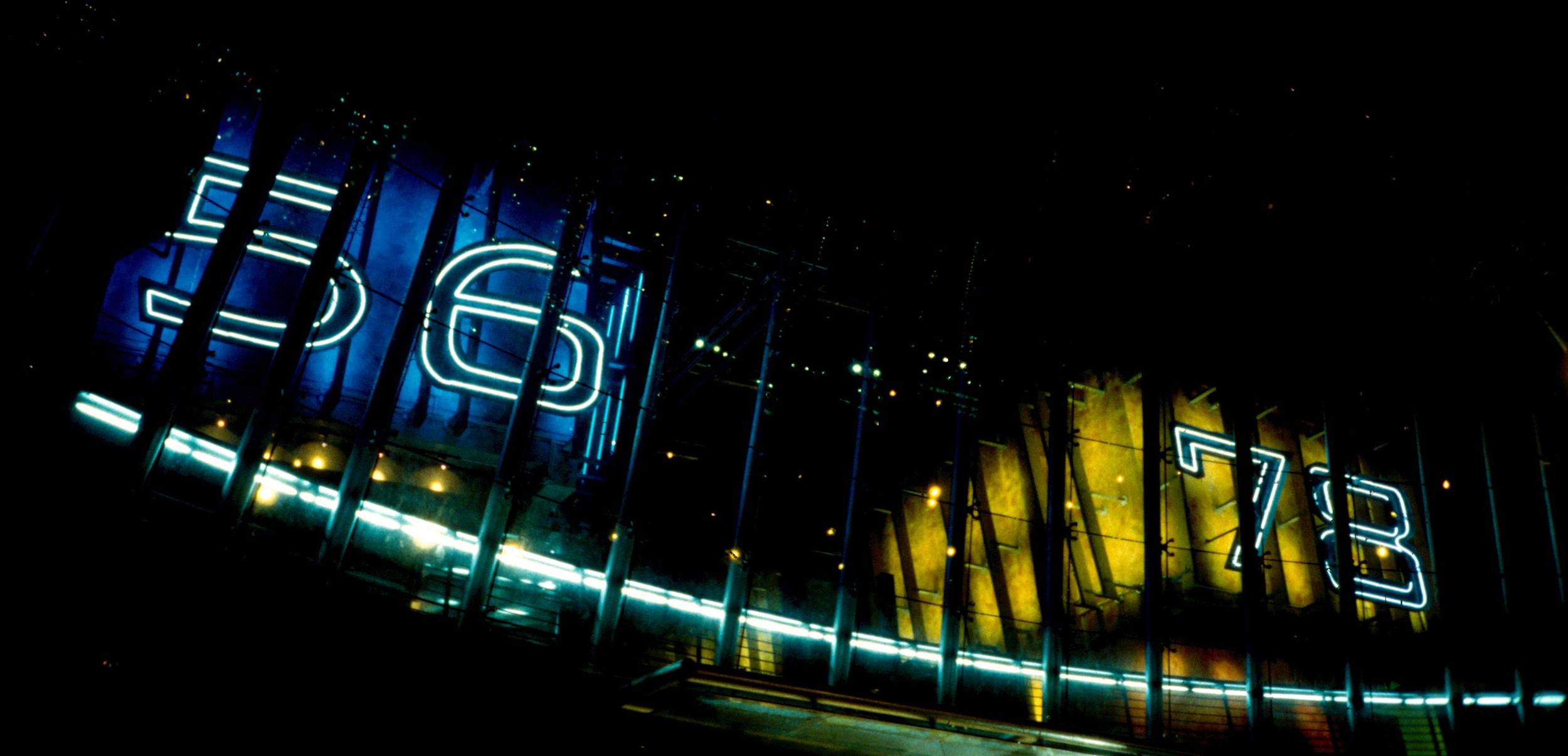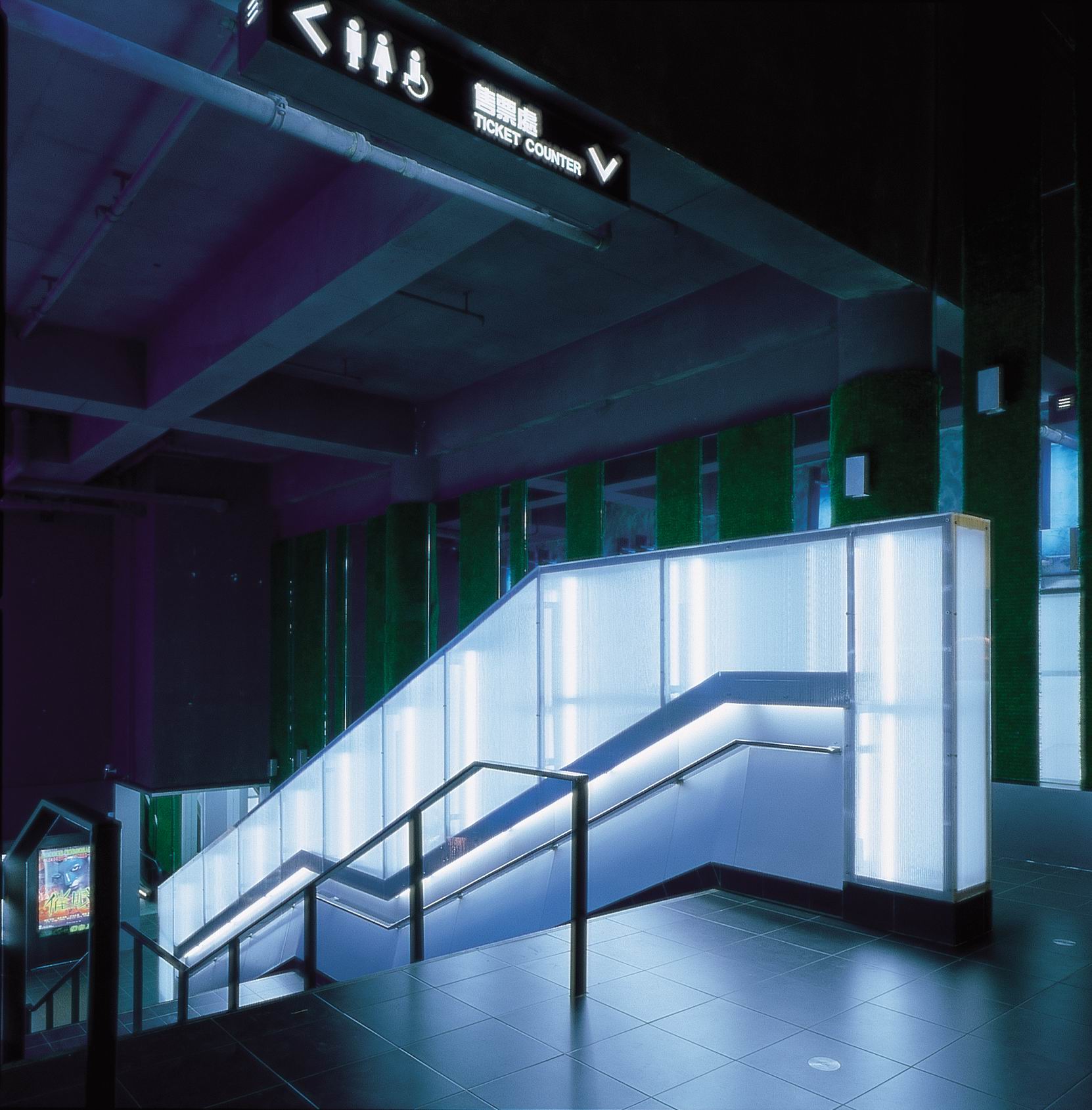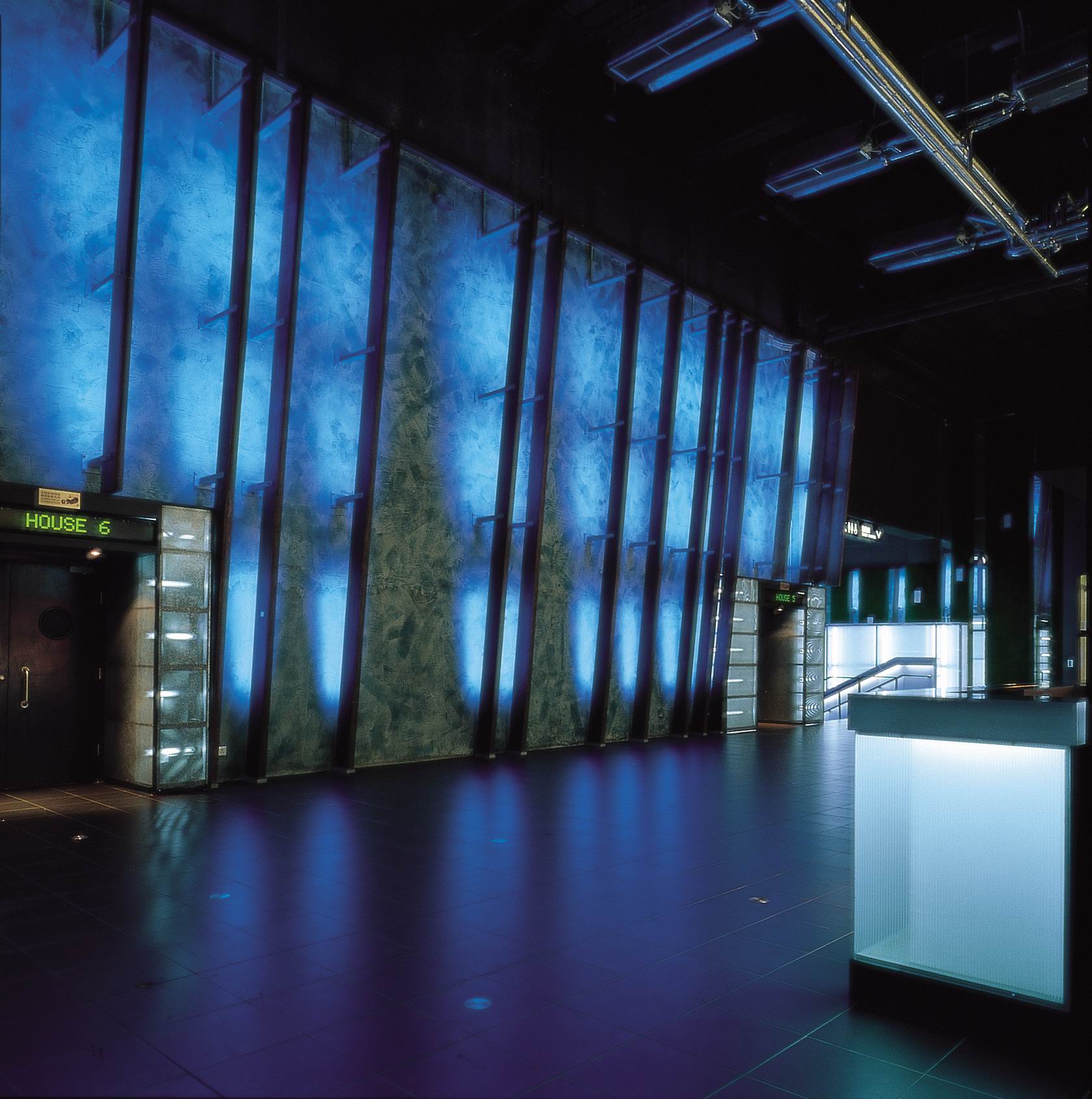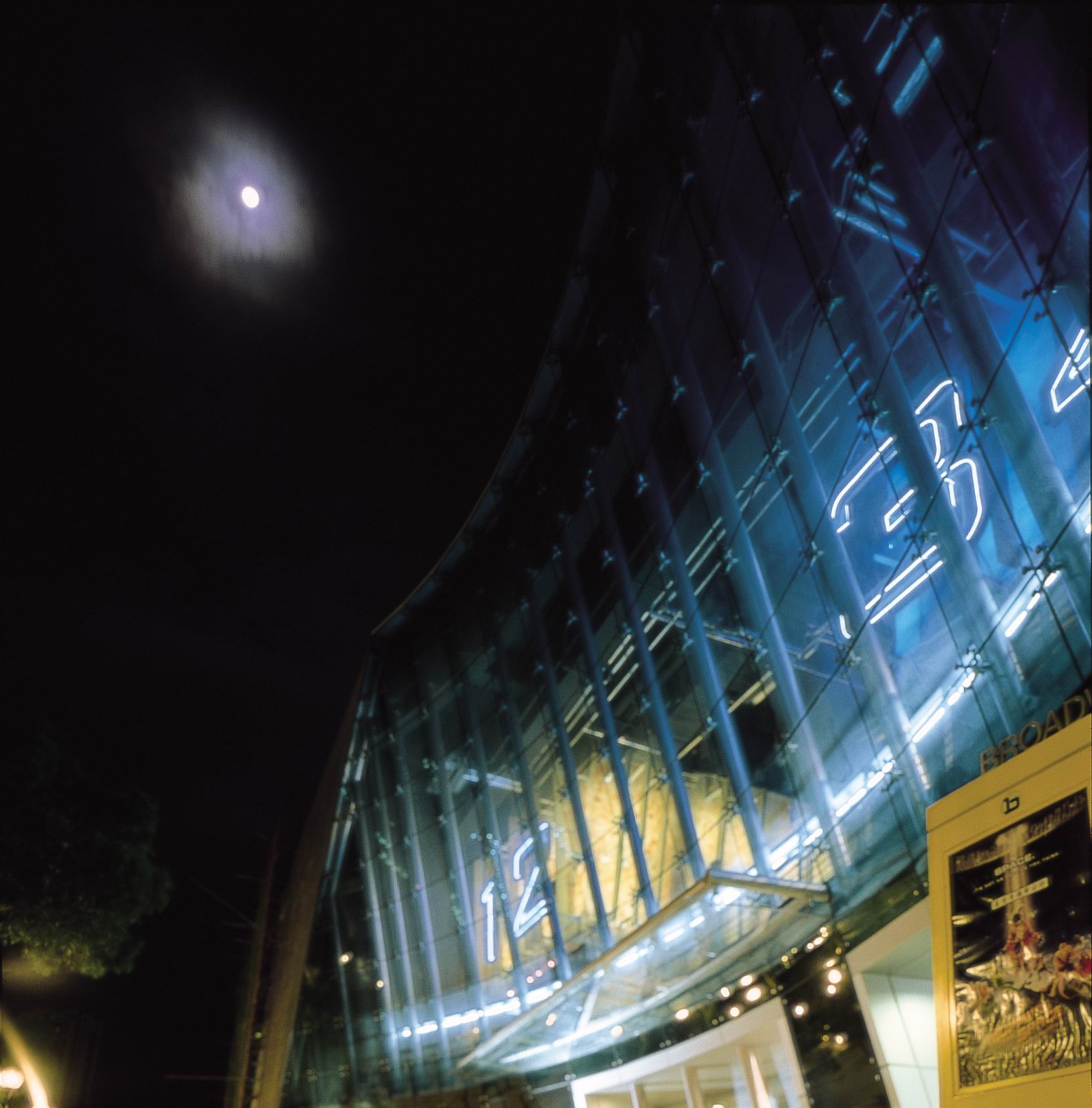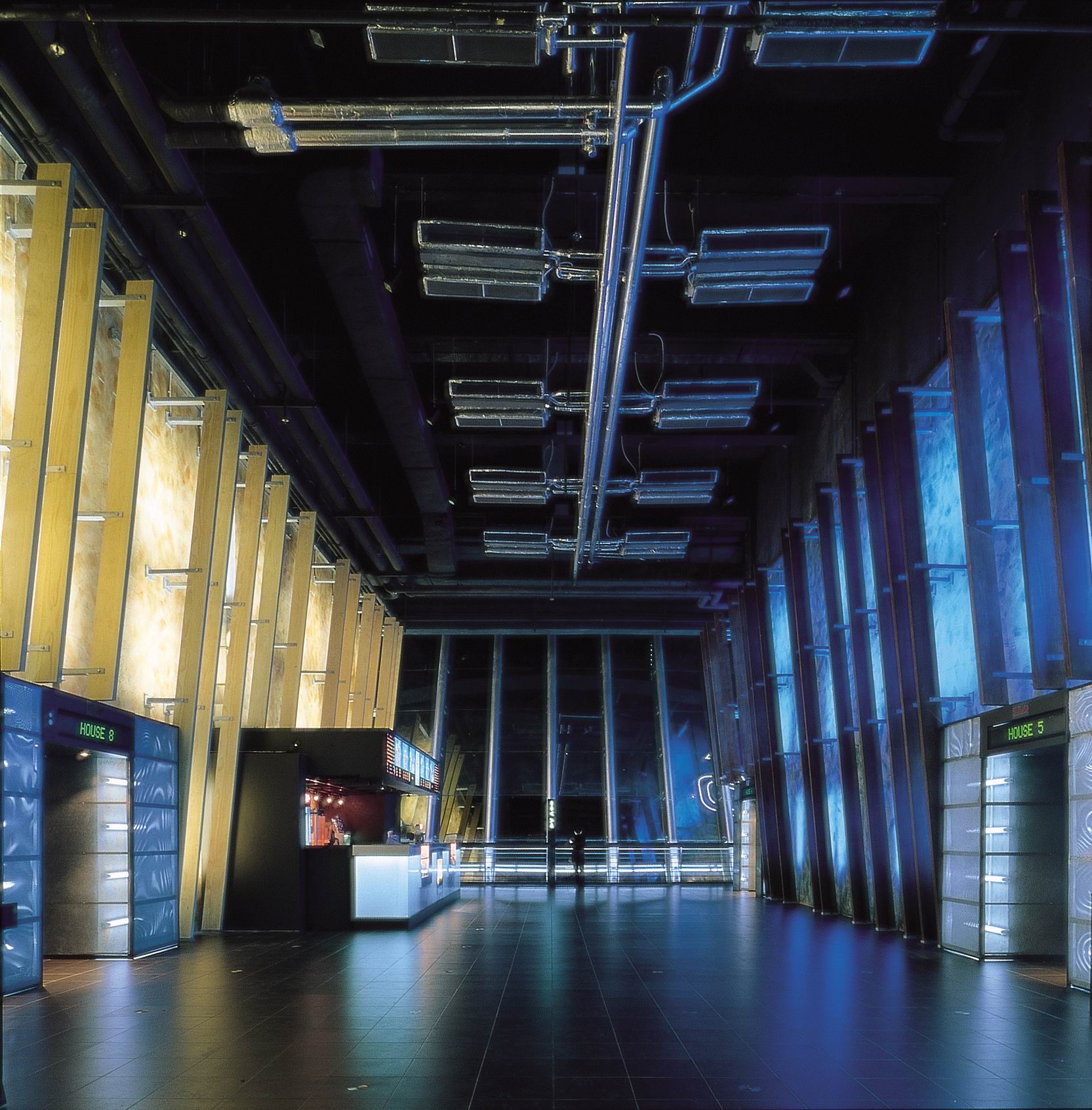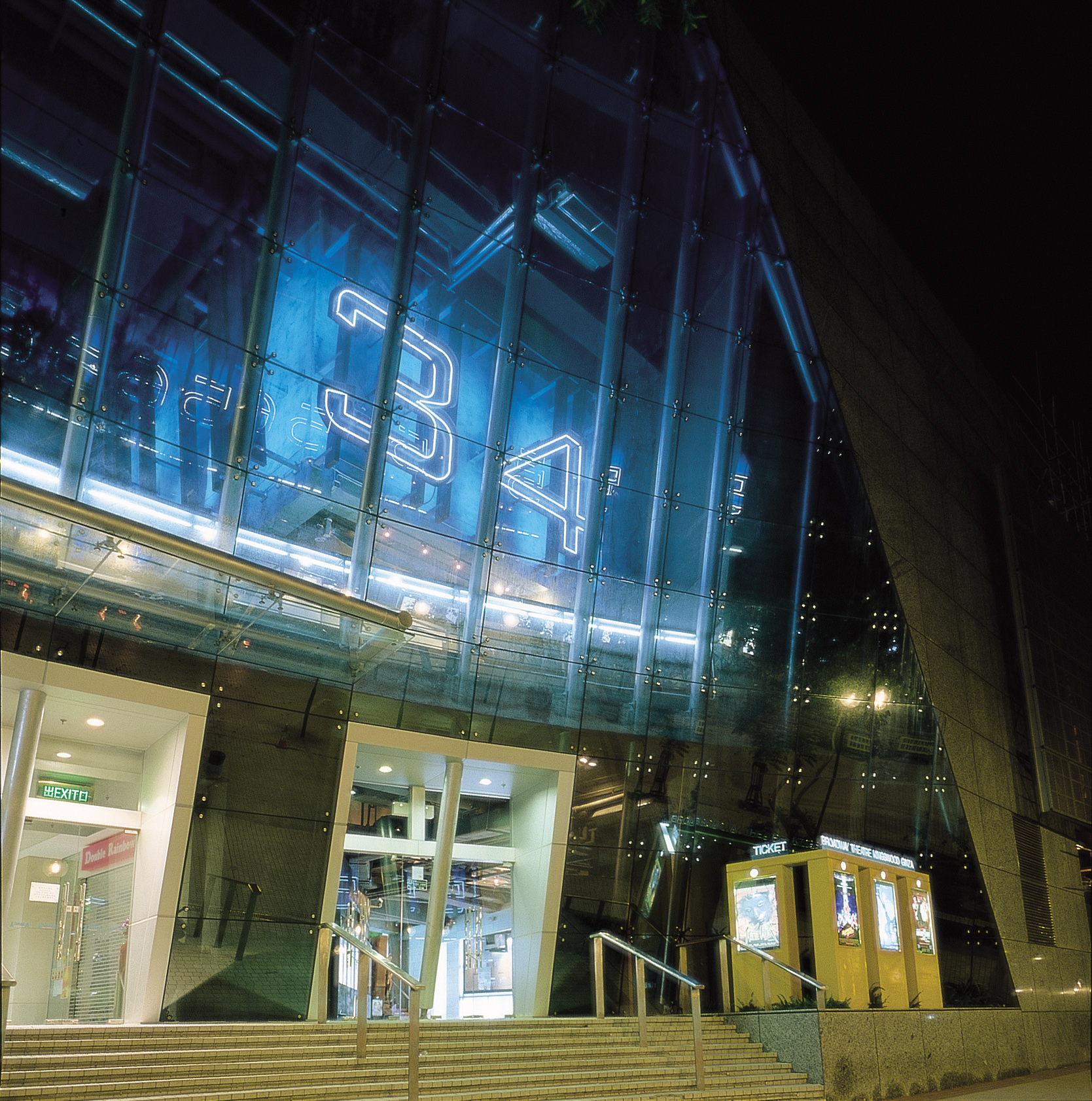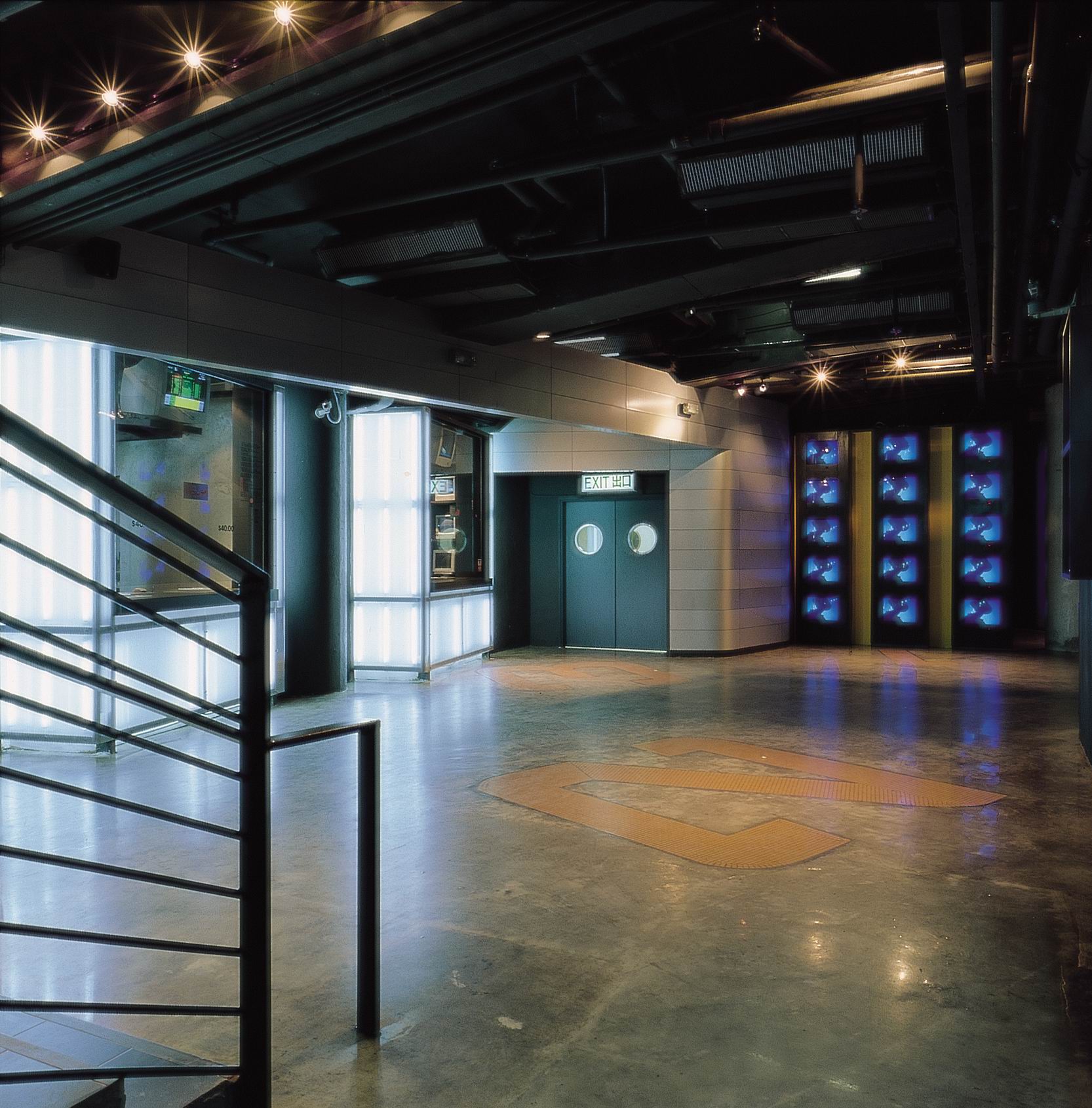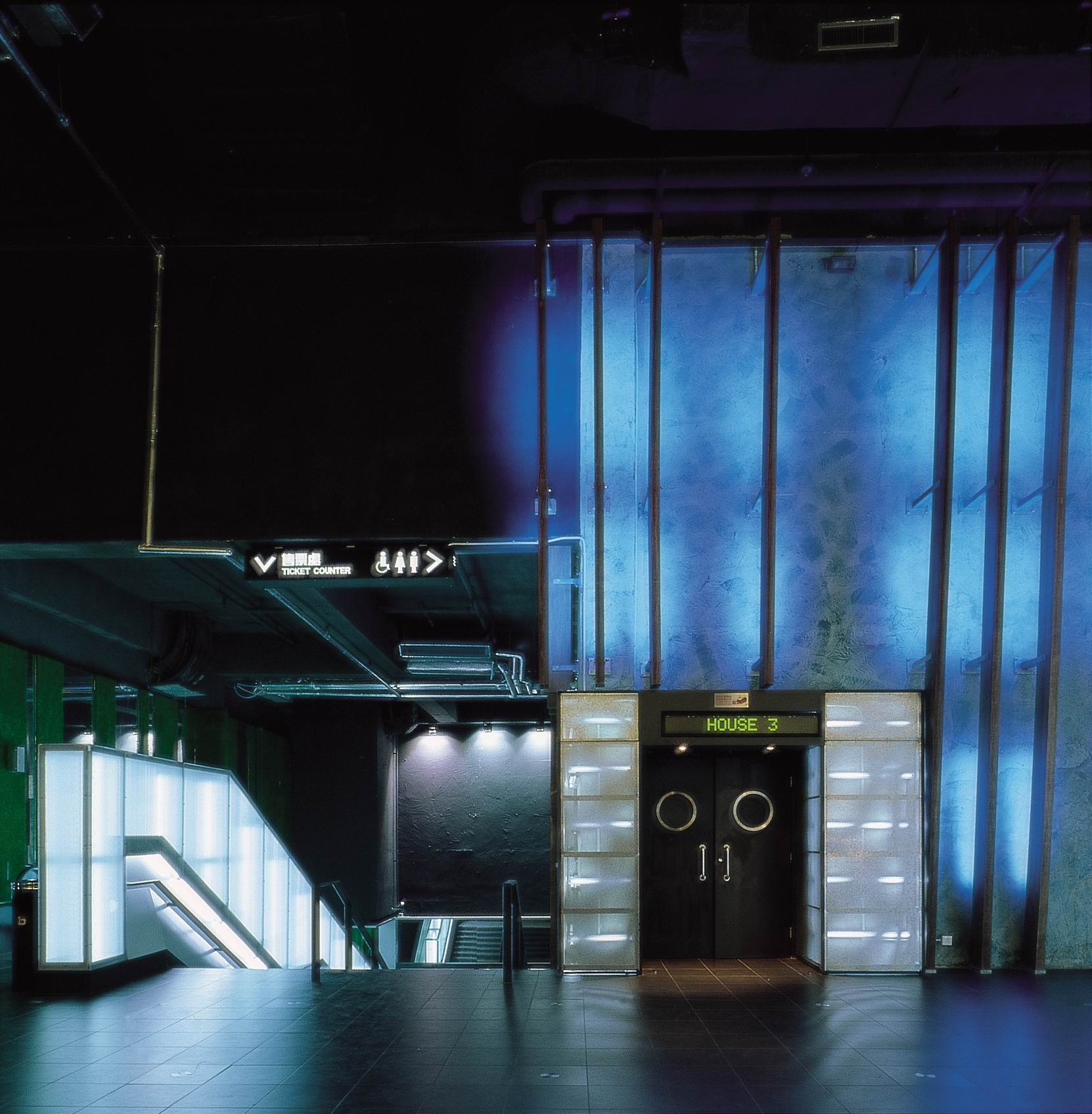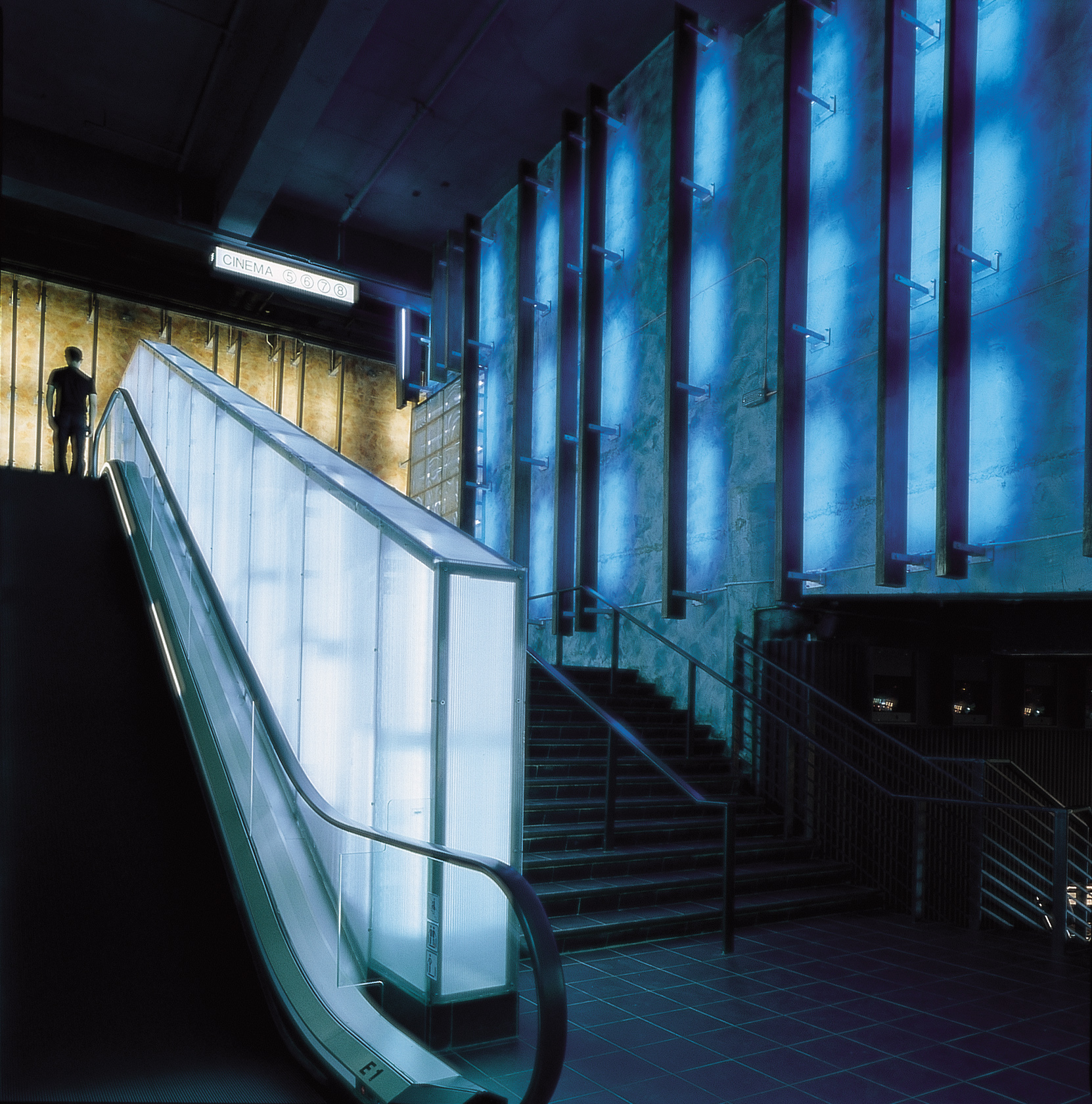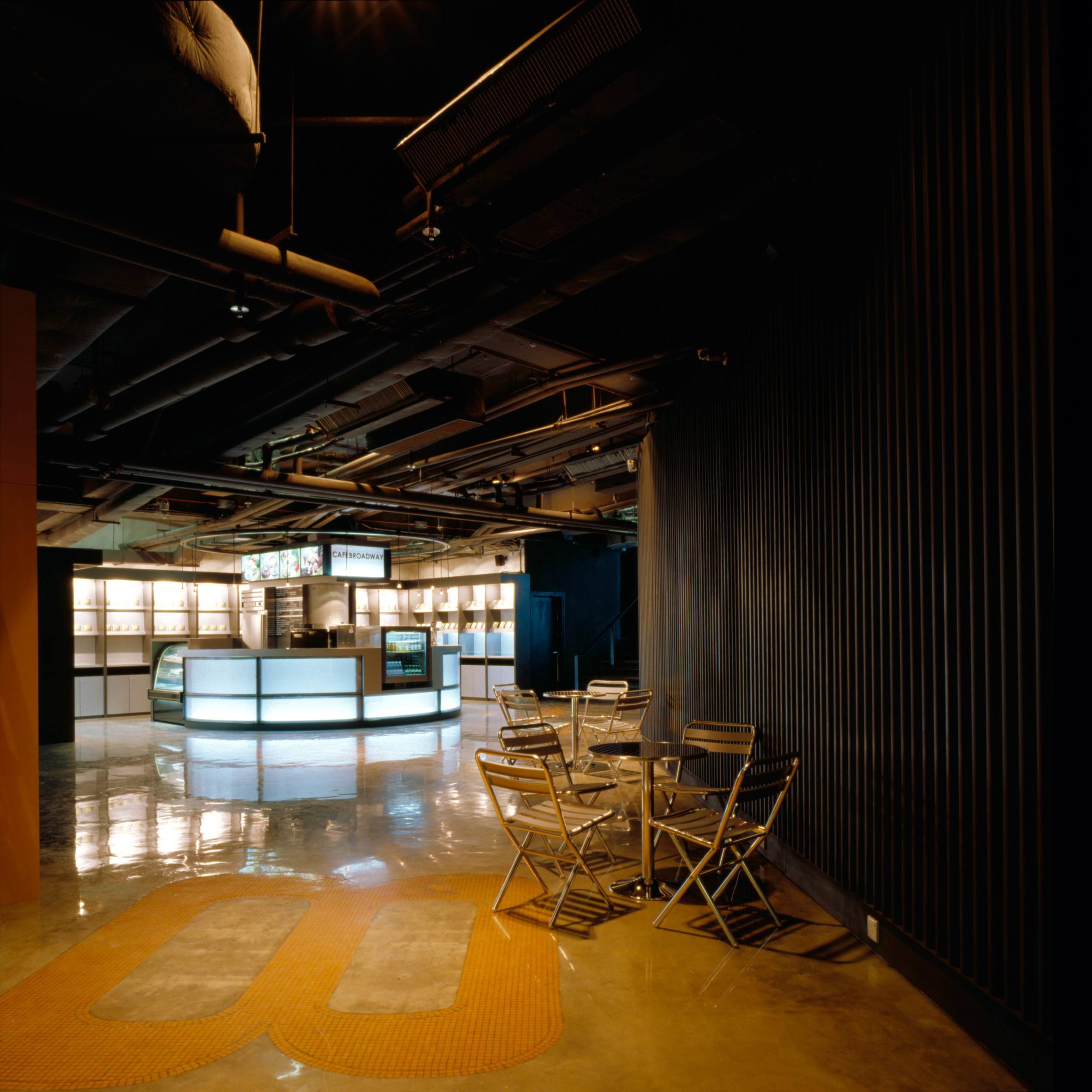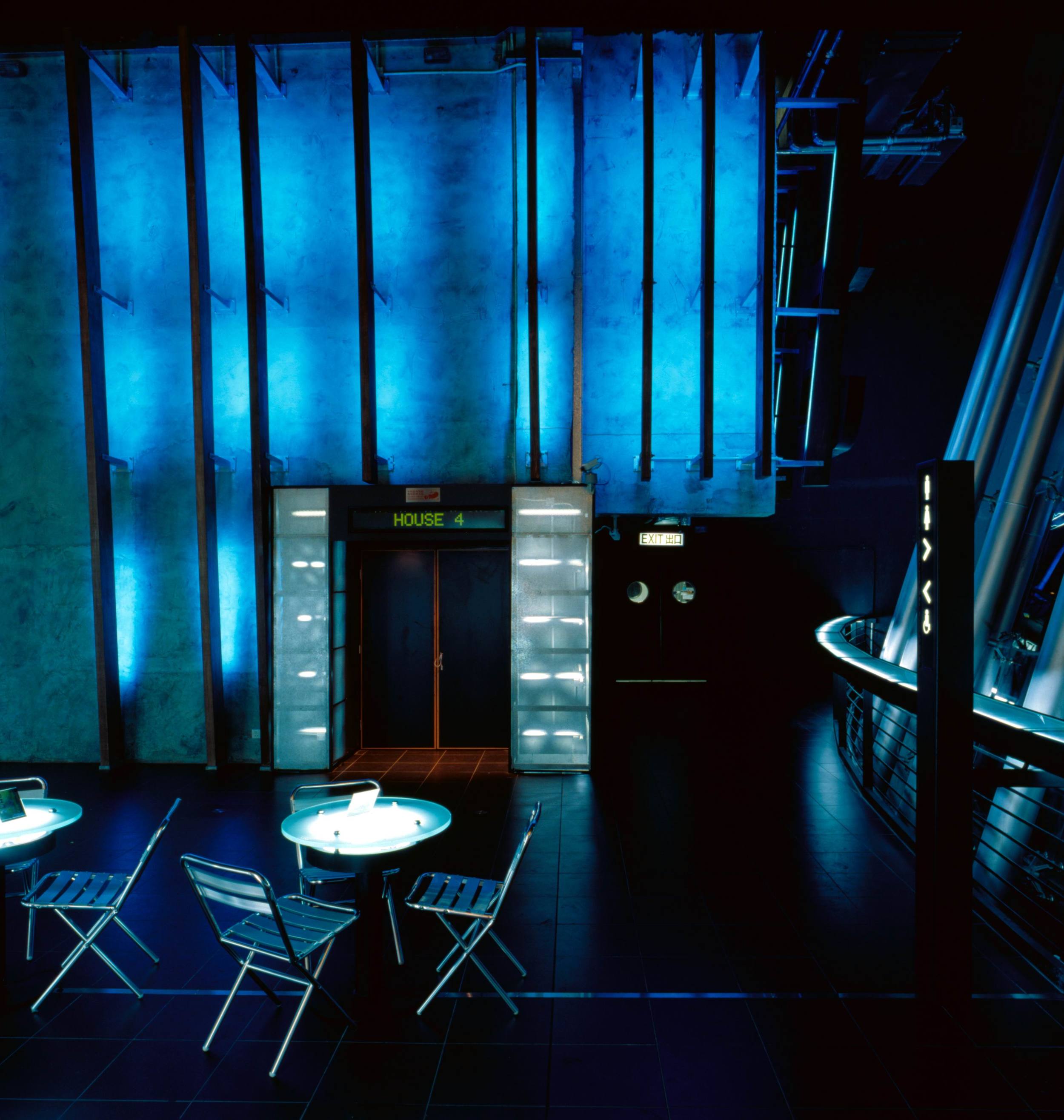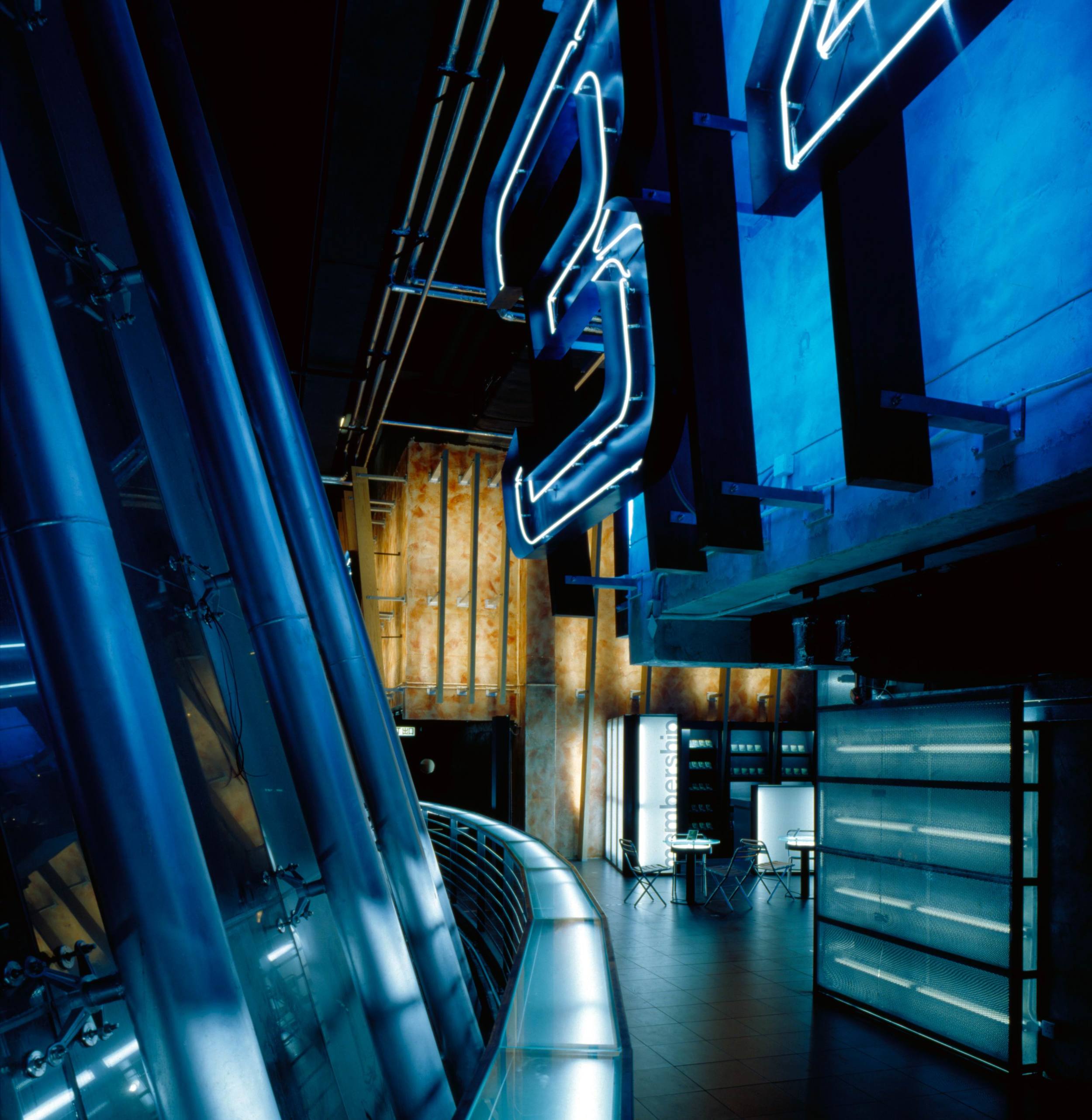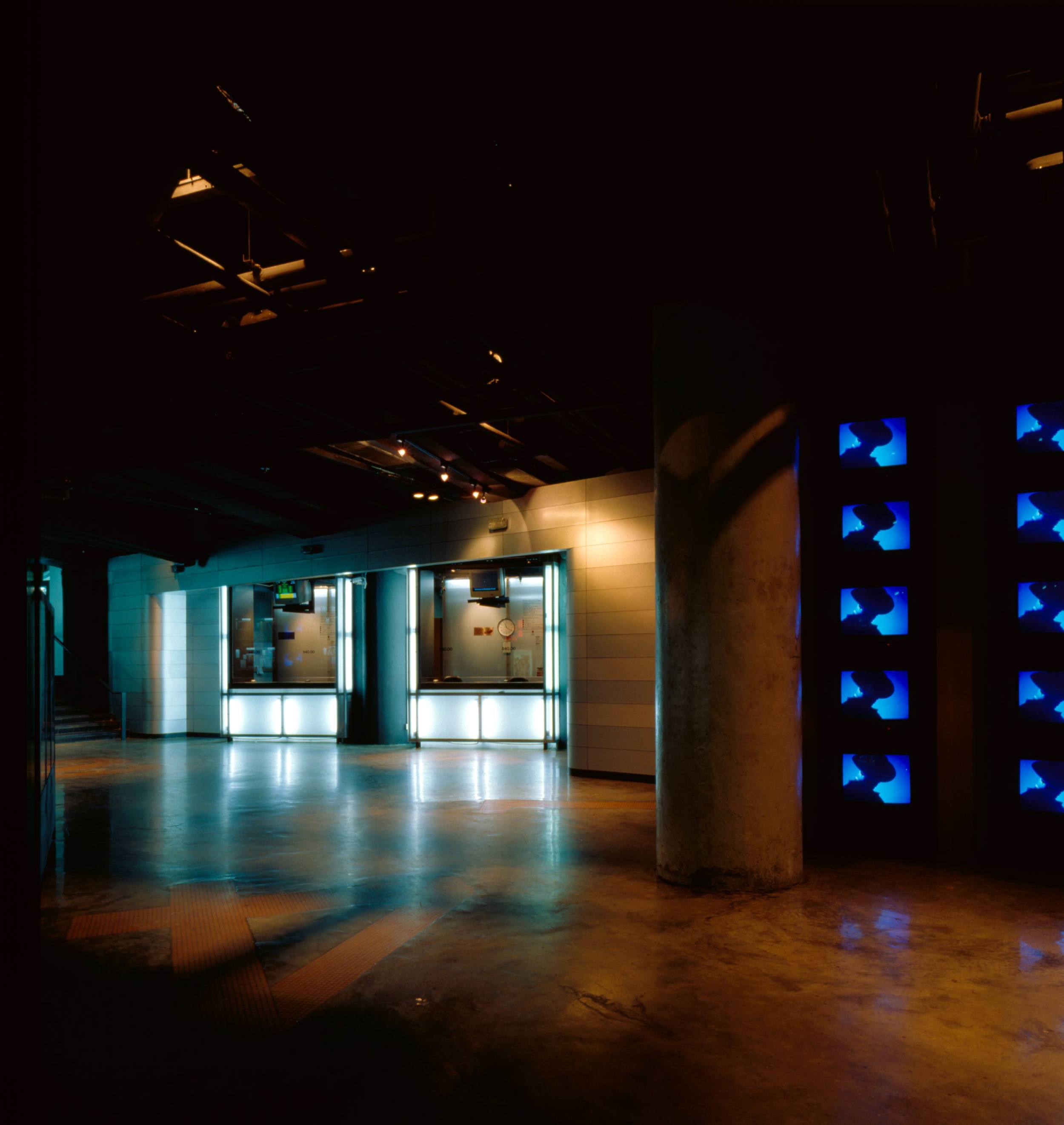The design brief for this new 8-house cineplex located in the Newtown of Tin Shui Wai highlighted the need to create a sense of coherent unity. A pair of four cinema halls were physically located in two different buildings separated by a major thoroughfare running across a shopping complex. For operational purposes, the ticket office would only be located on one side, though serving both. The establishment of a visual connection between the two sides was key to directing cinema-goers to the different houses; while the straight-forward means of articulating the Hall numbers on the main facades and different floors provide effective orientations. Different auxillary programmes further characterized each side.
An existing mirror plan condition provided the starting point to develop the project. The conceptual idea developed from the metaphor of “twins”. Even “identical” twins are not exactly the same, being variations or reflections of each other. Light and colour became the main architectural elements used in creating individual, but related identities.
The two groups of cinema halls were conceived as glowing objects floating within the shell of the reflective, curtain-wall glass buildings. By day the glass is visually impenetrable, mirroring the opposite building and surrounding towers. As the sun goes down though, the façade gradually becomes more transparent, revealing the strongly lit elements inside, challenging and blurring the boundary between inside and outside. Right from the entrance, light became the principal guide that orchestrated the path from outside to the cinema halls. The movie-goers are drawn in from the doorway by the illuminated ticket booth and a wall of flickering video monitors. Next, a translucent light wall following the side of the escalator leads the way up to the first floor cinema entries. A glowing bar, situated at the end of the double-height lobby hall, draws the waiting visitors to the curving window façade. The two identical bars visually re-established the connection between both sides of the cineplex.
The use of localized lighting system, employing predominantly various colors of fluorescent lights with the emphasis on colors and textures rather than on materials and finishes became the major approach to meet the extremely rock-bottom budgets in a relatively vast ‘public’ spaces not commonly found in similar establishments.



